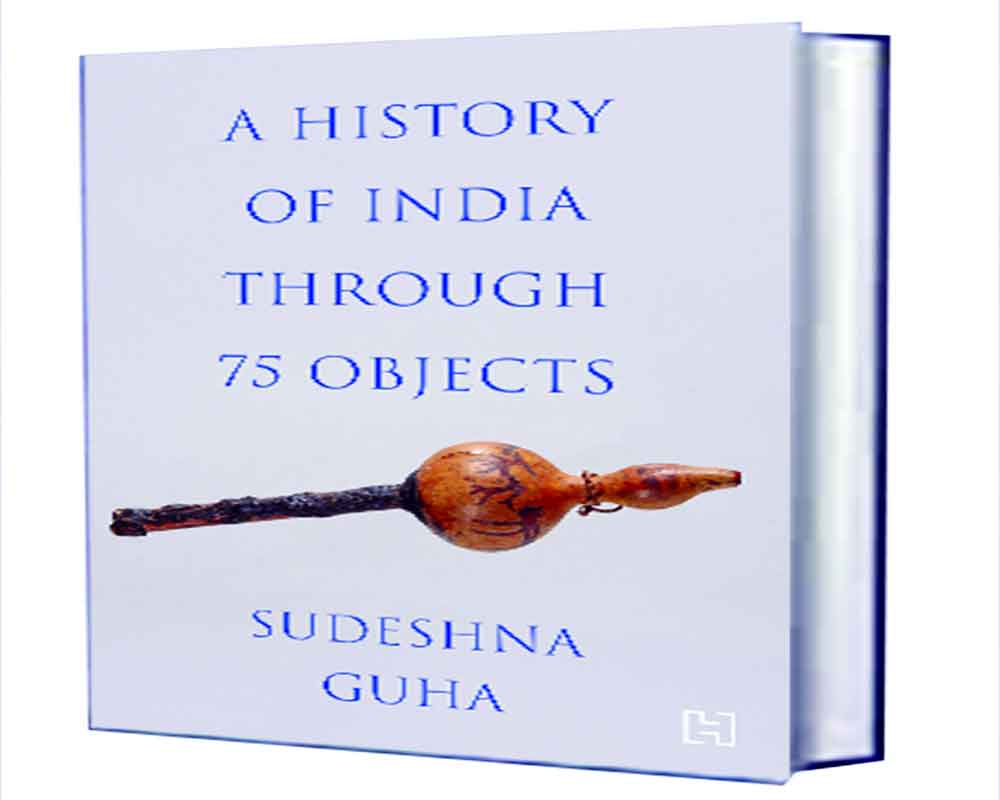Sudeshna Guha’s A HISTORY OF INDIAS THROUGH 75 OBJECTS is part of the effort to understand the history of the subcontinent through scrutiny of archeological finds, curated by her in an understandable logical sequence, writes Navin Upadhyay
Discoveries of ancient artifacts, tools, cave paintings, and other objects have held a great deal of fascination for archaeologists, historians, and anthropologists. Mankind has always been obsessed with discovering its journey from the pre-historic period to the present time. And for good reasons, too. After all, if we don’t understand the past, it’s not possible to shape the future, as well.
Sudeshna Guha’s A HISTORY OF INDIAS THROUGH 75 OBJECTS is part of the effort to understand the history of the subcontinent through scrutiny of archeological finds, curated by her in an understandable logical sequence.
The book is a part of a similar initiative undertaken by historians and authors in different parts of the world. A HISTORY OF THE WORLD IN 100 OBJECTS by the British Museum, published a decade ago, may have influenced Guha’s voluminous effort.
The objects showcased are well-researched and well-known. There is no unveiling of any secret antiques or artifacts and there is no new interpretation of an existing archaeological find. But the beauty of her book lies in the selection and sequencing of the objects as well her analysis of their progressive linkage.
In Guha’s world, “ The collection here highlights the stringent demand of the scholarship[p of the material. Many objects raise questions about classifications, and some remind us of the completed, and often out-of-date, antiquity laws that establish their economic and heritage valuations and condition their access. The essays of the photographs illustrate the importance of informed, critical engagement with the materiality of vision within historical and archeological scholarship. With the lithograph, posters and graphic novels, photographs too bring us to note the inordinate power of visual histories for resisting moves of authoritarianism.â€
The first object showcased in the book is The Pallavaram Spear Head. An Englishman, Robert Bruce Fooote of the Geological Survey of India found this “ moderately fine-grained cinnamon-colored quartzite†on May 30, 1863, near the Cantonment of Palaveram, 1`0 km of today’s Chennai. This is considered the first paleolithic found in Indi of the spearhead type. In shape, it was very different from the great majority of South Indian paleolithic, being long and narrow and quite fitted to be used as a spearhead, if suitably hafted.
Commenting on the significance of the find, Guha says that the Pallavaram Spear head reminds us that the “out of Africa†model which once expanded the spread of the Acheulean Culture nearly all over the world is outdated.â€
Guha has placed the Iron Pillar of Mehrauli in Delhi as the 27th object among the 75 on her list. After tracking the history of the awe-inspiring 61,000 kg of the massive wrought iron shaft, she concludes that the Pillar is associated with connected histories of power, sacrality, and ecology, which guided the ethical imperatives of the societies that lived under its shadows.â€
Some other objects listed in the book are : The Yakshi of Didarganj ( In Patna); Samudragupta’s golden coin; The dancing girl ( found during the excavation of Mohenjodaro); the Monkey skull Trophy ( Acquired from Wakchind Village of Nagaland in the 1920s); the Sarnath Buddha; Akbar’s Razmnama; Jahangir’s meteorite knife; Timur Ruby etc.
Guha says that seeking histories through objects demands the careful study of one thing concerning all others that are associated with it. “Object histories guide us to regard the vast arena of unknowns and ontology of absence. And in thinking through them, we began to understand the injunctions of astute historians to approach aspects of the past by searching carefully for perceptions of these in the past.â€
Sudeshna Gua is a professor in the department of Shiv Nadar University. She holds Ph.D. in archaeology and has a long curatorial and teaching career at the University of Cambridge.
Title: A HISTORY OF INDIA THROUGH 75 OBJECTS
Author: Sudeshna Guha
Pages: 669
Price: 1299
Publisher: Hachette India


























